This is one of the most fairytale regions in France. A place with storybook villages, medieval castles, rivers perfect for canoeing, and great food: Dordogne France. We’ll tell you what makes it so special, share a little bit of the history, the difference between Dordogne and Perigord, the best towns to visit, and of course what to do, see, and eat while you’re here. And watch until the end because we will be talking about a place just outside of Dordogne that you need to add to your itinerary.
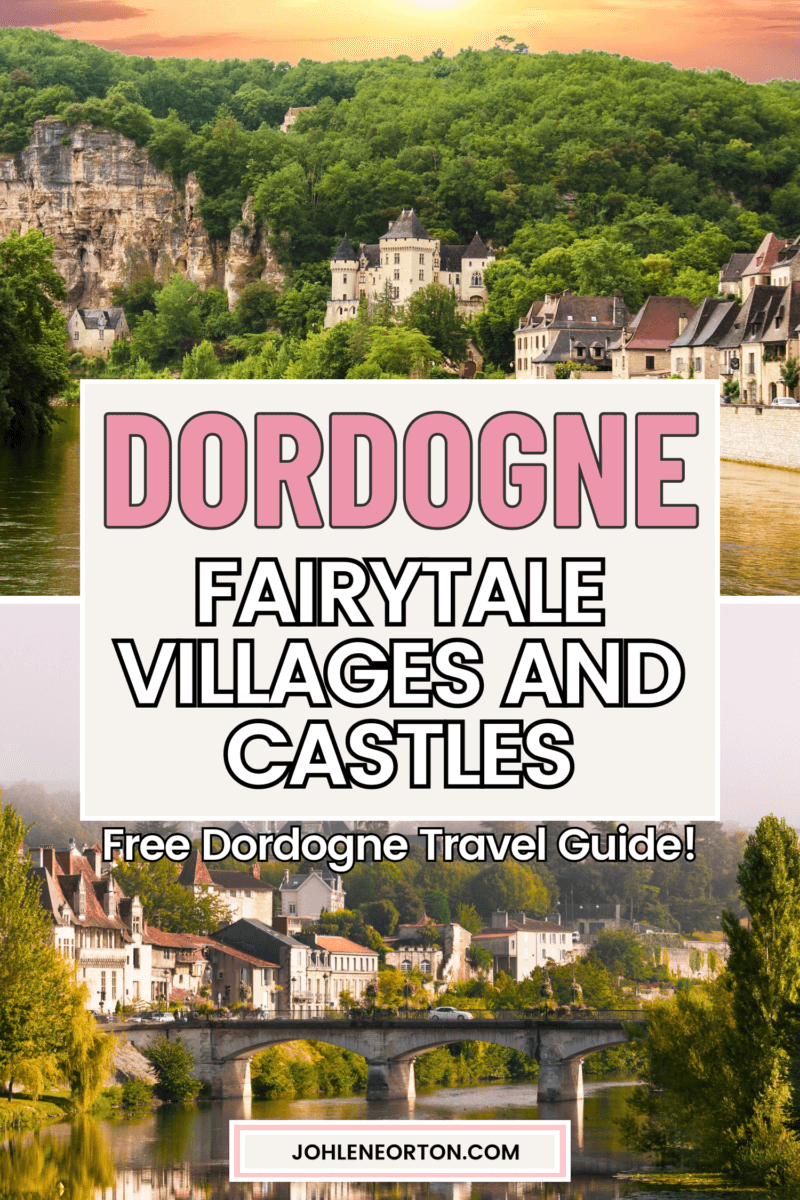
GET YOUR FREE DORDOGNE TRAVEL GUIDE HERE!
We’ve laid this all out for you in our free Dordogne travel guide, plus we’ve also added three things we recommend doing in each place with links to the activities and locations.
TABLE OF CONTENTS
- Dordogne vs Perigord
- Perigueux
- Sarlat la Caneda
- La Roque Gageac
- Beynac et Cazenac
- Bergerac
- Limeuil
- Rocamadour
- Where to stay in Dordogne
Dordogne vs Perigord – Are they the same thing?
So, let’s clear this up because most people (including ourselves up until we visited) have no idea why one is used instead of the other and it can be a little confusing. Dordogne and Périgord actually refer to the same area, but in different ways.
Dordogne is the official name. It’s the department, kind of like a county, and that’s the name you’ll see on maps.
Périgord, on the other hand, is the historical and cultural name. That’s the word you’ll hear in tourism, in food, and when people talk about the history of the region. It’s the Périgord that’s famous for truffles, foie gras, castles, wine, and prehistoric caves.
And to make it a bit more interesting, the Périgord is divided into four parts, each with its own color. There’s the Perigord Vert (Green Périgord) in the north with rivers and forests, the Perigord Blanc (White Périgord) around Périgueux with limestone landscapes, the Perigord Noir (Black Périgord) near Sarlat with oak forests and medieval towns, and the Perigord Pourpre (Purple Périgord) in the southwest with vineyards.
So, as you can see, the colour of the area represents the scenery.
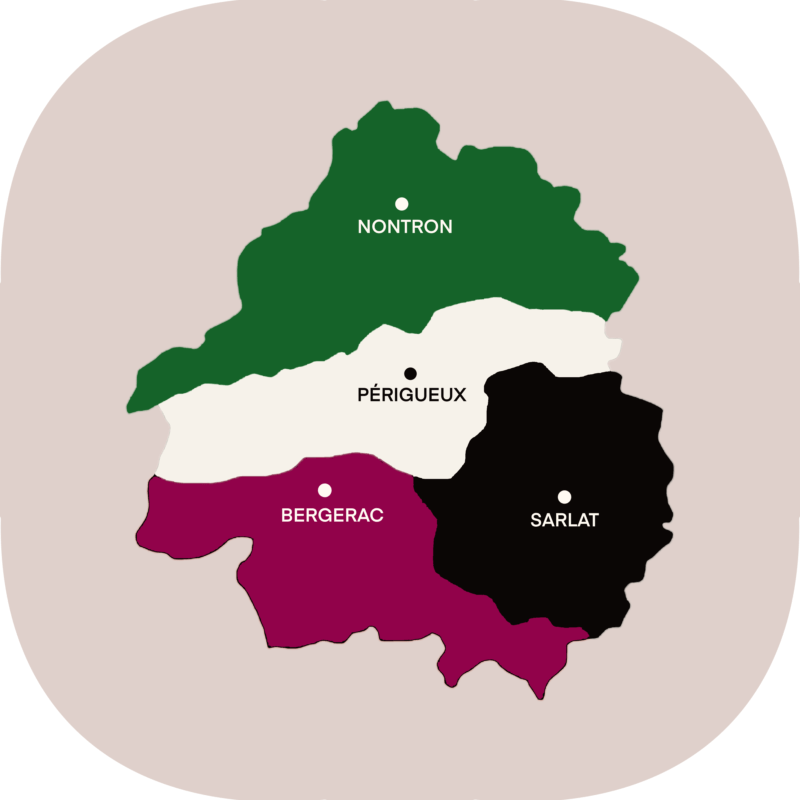
So in short, Dordogne is the official name. Périgord is the cultural identity.
Now let’s talk about the places we visited and the ones we think you should check out too. We tried to pick a favorite, but honestly, we couldn’t—we loved them all and will definitely be coming back to explore this region more.
Digital Road Trip Planner
Before we dive in to our favourite towns in Dordogne, we’ve created a digital road trip planner that keeps everything for your trip in one place. It’s got an interactive map you can customize with your own route or destinations, and it’s fully hyperlinked so you can use it like an app and get to the different sections easily. It’s just an easy way to keep your plans organised without getting confused with all your notes and tabs.
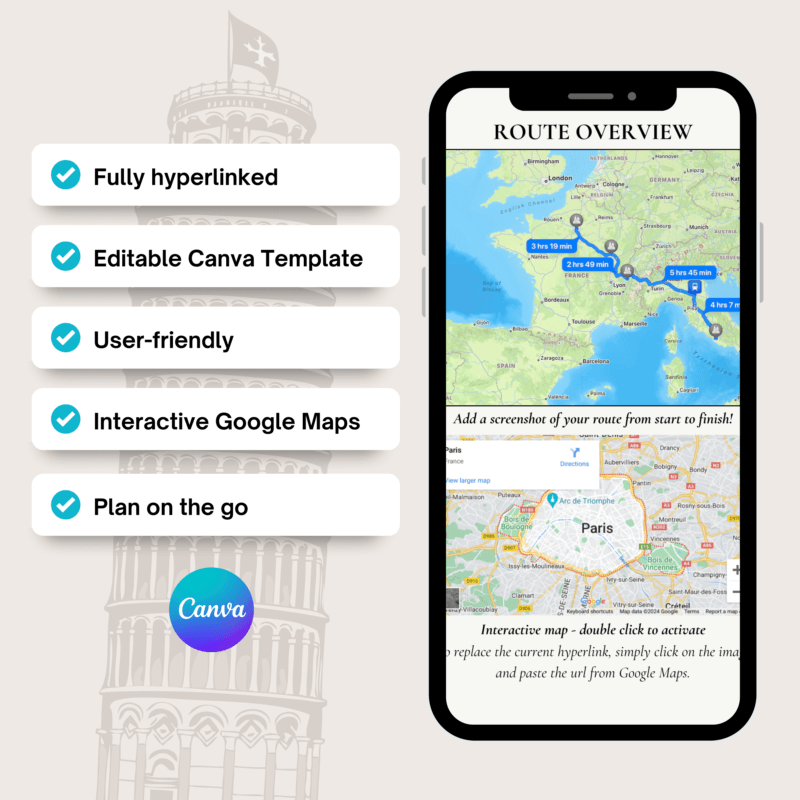
PERIGORD BLANC
Périgueux
This is the capital of Dordogne. It has a mix of Roman history and medieval streets. The Old Town is easy to explore, with lots of little streets and squares. The main highlight is the Saint-Front Cathedral, built in the 12th century with its five domes. The best view of the cathedral is from the Pont des Barris over the water. Inside, it’s beautiful, with stunning stained glass and a charming gift shop.
The first thing we noticed about Périgueux is how clean and well-kept it is. You can tell the residents take pride in their city.
We recommend parking by the Périgord Museum of Art and Archaeology, along a long row of beautiful, neat townhouses. It’s close to everything, it’s in the shade, and reasonably priced.
You’ll notice plenty of bus stops here with Peribus, the main line covering Périgueux and nearby suburbs. To get around without a car, to reach the other places we mention in this video you can use the TER Nouvelle-Aquitaine trains or the Transperigord buses.
For lunch, we had delicious crêpes with violet and rose-flavoured ice cream at Crêpes & Dentelles on a cute street. The service was amazing, and the food was so good!
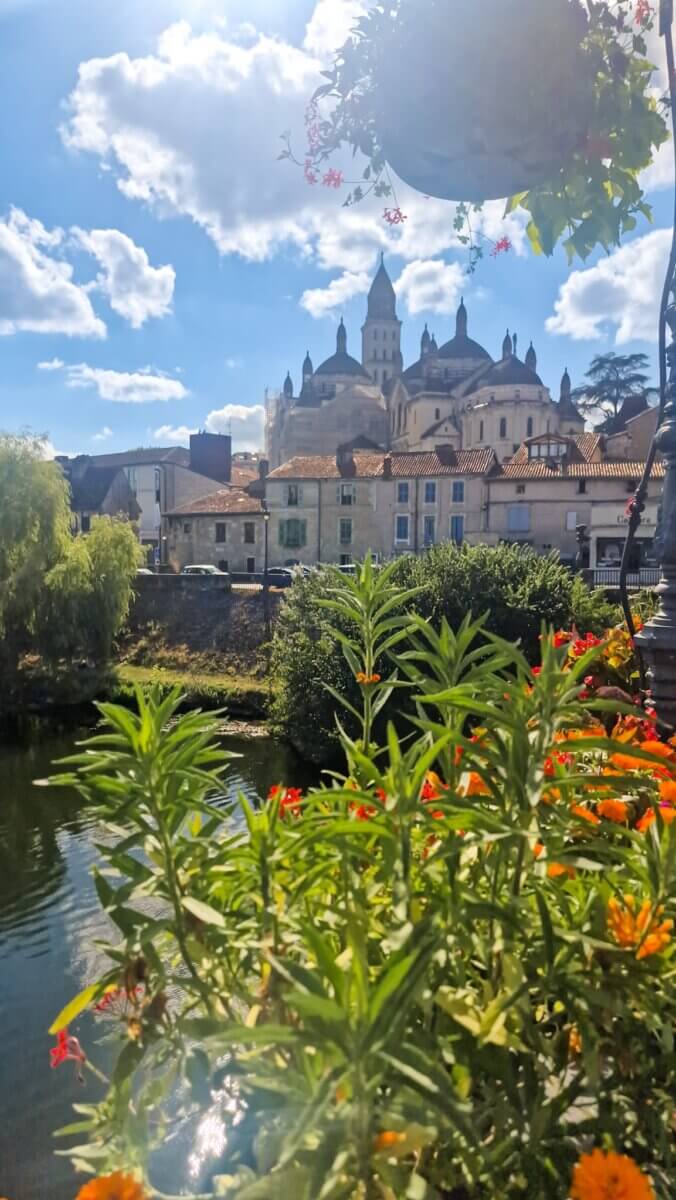
Want more insider road trip hacks and get to see behind-the-scenes of our travels?
If you’re not already on the list, sign up to our weekly newsletter to stay updated, plus we share super useful travel tips!
PERIGORD NOIR
Sarlat-la-Canéda
Sarlat la Caneda is the medieval center of the Perigord Noir. The stone buildings make it feel like you’re stepping back in time.
Some of the main things to see in Sarlat are the Cathédrale Saint-Sacerdos, a simple cathedral with really pretty stained glass and a beautiful organ. Another must-do is walking through the Old Town, exploring all the little shops selling duck products (and maybe picking something up for yourself). Don’t miss the statues: Manor Gisson and the three bronze geese, Les Trois Oies.
When in Dordogne, you have to try duck confit (duck legs slowly cooked in their own fat). Here in Sarlat, we had lunch at a cute little restaurant, called Brasserie La Lanterne, next to the cathedral and went for their set lunch menu, 23,90€ for a starter, main, and dessert. We started with the Salade de gésiers de canard (duck gizzards salad). For the main, we chose duck confit with roasted potatoes. Dessert was ice cream, though you could also pick chocolate mousse or panna cotta.
Sarlat is also famous for its weekly market, held on Wednesday mornings and all day Saturday in the main square, Place de la Liberté. It’s full of local food like truffles, walnuts, and other duck specialities.
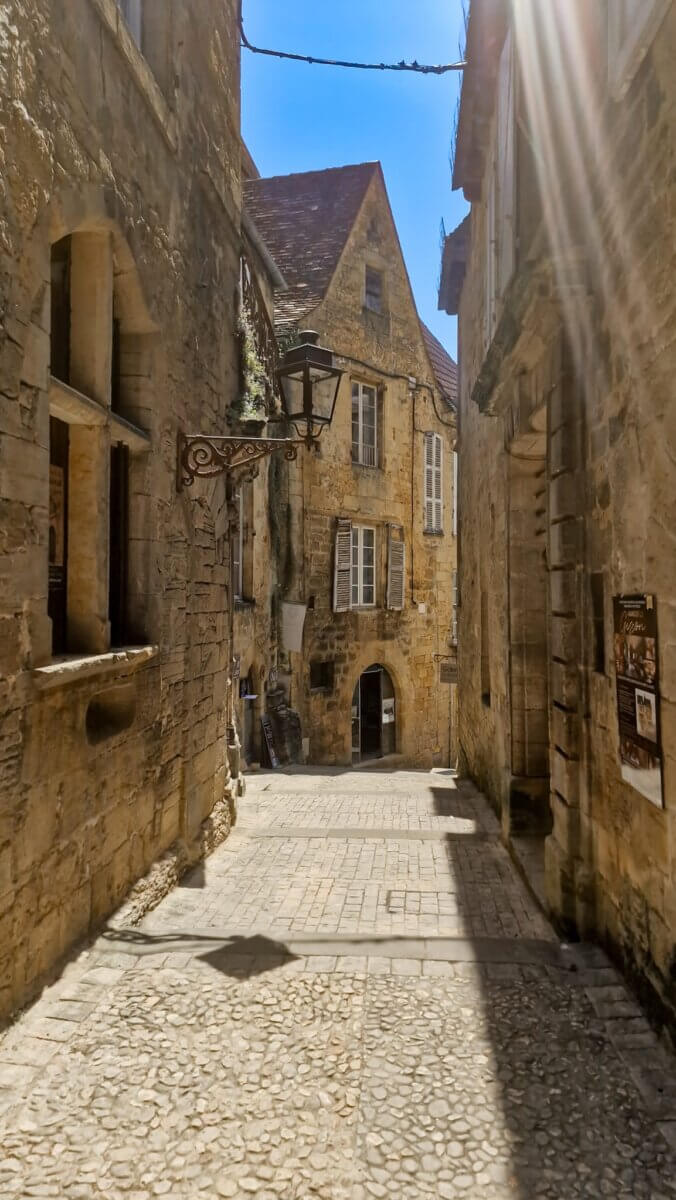
La Roque-Gageac
This village sits right on the Dordogne River, with houses built into the cliffside. A boat ride on the river is the perfect way to see it, and it’s totally worth it for the views alone. The ride was peaceful, the audio guide taught us a lot about the river’s history, and we loved watching people paddle past in their canoes. Tickets cost 13€ and include the guide.
Along the way, you’ll pass beautiful spots like the Château de la Malartrie, river beaches full of people enjoying the day, and the Fort de La Roque-Gageac (an old refuge built into the cliff). You can hike up to it in about 10 minutes after your ride, and entry is 7€.
If you’d rather explore La Roque-Gageac by canoe, there are plenty of rental spots along the river. Canoeing is really popular in this region, and you’ll find several companies offering different routes to choose from.
La Roque-Gageac is very close to the next place we’re about to cover, so we suggest visiting them on the same day. Let’s head over to Beynac-et-Cazenac.
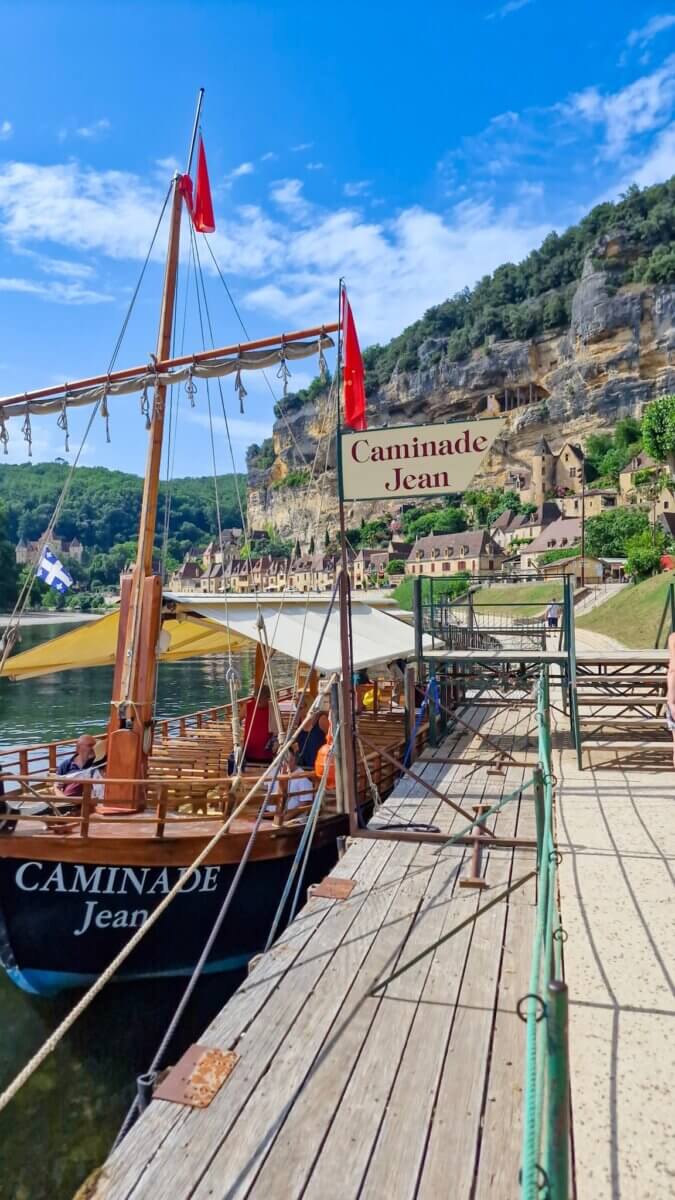
Beynac-et-Cazenac
Beynac et Cazenac, or just Beynac is a gorgeous little town by the river. Beautiful stone houses with pastel shutters, cobblestone streets, flowers and plants planted everywhere…
The main things to do here are:
Walking through all the little streets, you make your way up to the Château de Beynac at the top of the hill. It costs 11,50€ to enter (7,50€ for children), is open every day, and includes an audio guide. Once you’ve visited the château (or even if you just want to see the outside) follow the signs to the Panorama viewpoint. The views from there are absolutely beautiful!
We also recommend grabbing an ice cream at the stand that’s part of the Hôtel du Château and enjoying it by the river. We tried the rose-flavoured one, and it was delicious. Rose-flavoured products aren’t a typical specialty of the Dordogne. They’re more known for walnuts, truffles, foie gras, duck, strawberries, chestnuts, and wines, but we noticed many places had rose-flavoured ice cream, jams, or syrups. We loved it so much that we went a little rose-crazy on our trip.
For lunch, we passed by an adorable restaurant called La Petite Tonelle, that seemed to be built into a cave. Unfortunately, it was closed when we got there, but it has great reviews and could be a lovely spot for a meal.
Right next to the restaurant is a shop, Esprit Gourmet, selling souvenirs, local products like wine, cheeses, foie gras…and these wooden geese in different colours that we thought were so cute. Definitely stop by!
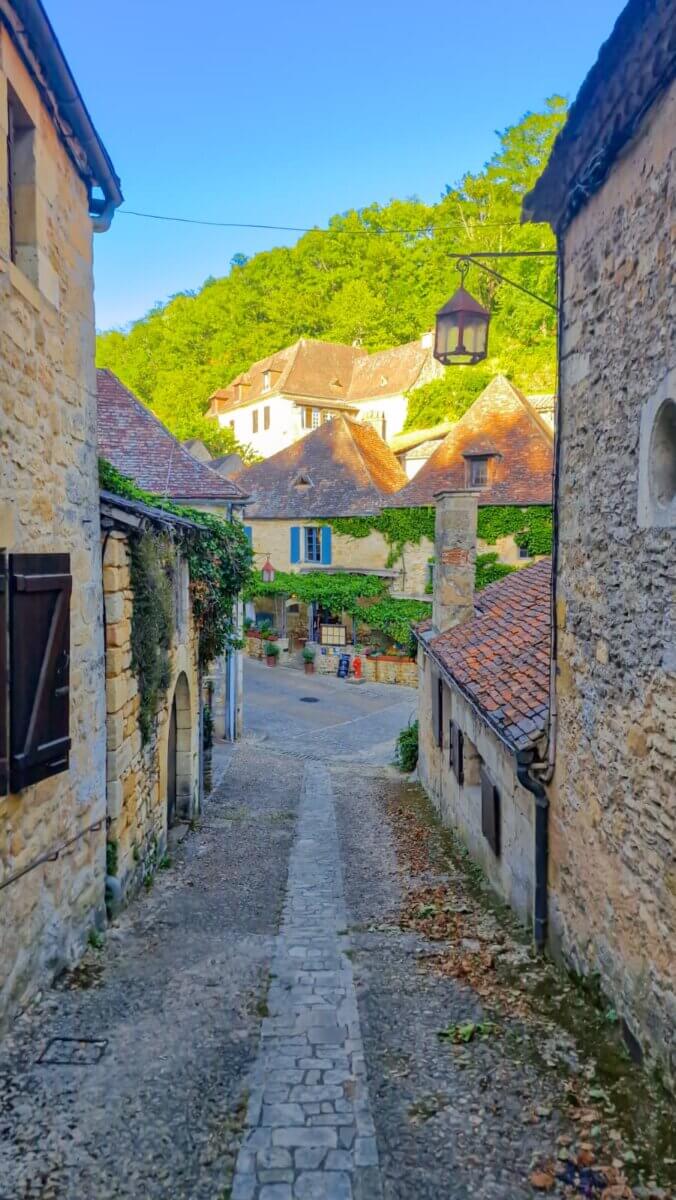
PERIGORD POURPRE
Bergerac
Bergerac is wine country, famous for its vineyards. It’s especially known for sweet Monbazillac wine, and there are plenty of vineyards around to visit.
In town, you’ll find squares with old half-timbered houses, cute restaurants and a statue of Cyrano de Bergerac, the famous character linked to the name. Cyrano was novelist, duelist and a romantic hero, famous for his large nose, poetic skill, bravery, and unrequited love for his cousin Roxane. When we visited Bergerac, there was a cutout of a lady in the window where he seems to be looking up to, we assume she was Roxane.
We highly recommend having a drink or a meal at one of the restaurants, like Quai Salvette, with a view of the Vieux Pont (old bridge).
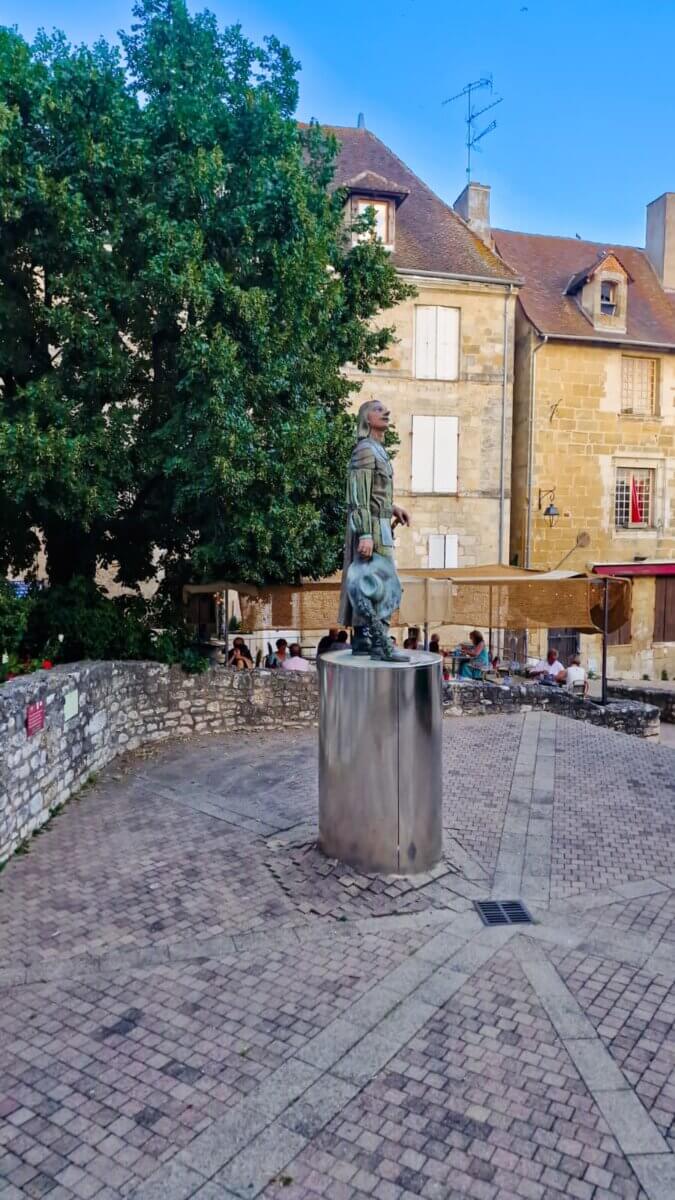
Limeuil
Limeuil is a small town located where the Dordogne and Vézère rivers meet, giving it historical significance both commercially and strategically. It was once voted one of the prettiest towns in France. The town is full of charming little houses and streets to explore. We recommend visiting the Mairie (town hall), which has a beautiful garden with views of the Pont de Limeuil spanning both rivers.
For food, you can enjoy a drink at one of the riverside restaurant bars, or at Le Chai, a lovely restaurant set in a garden, we especially loved the red shutters.
Let’s move on from the Périgord and talk about a place just outside of it that’s definitely worth adding to your trip. It’s honestly one of the most beautiful places we’ve ever visited in France.
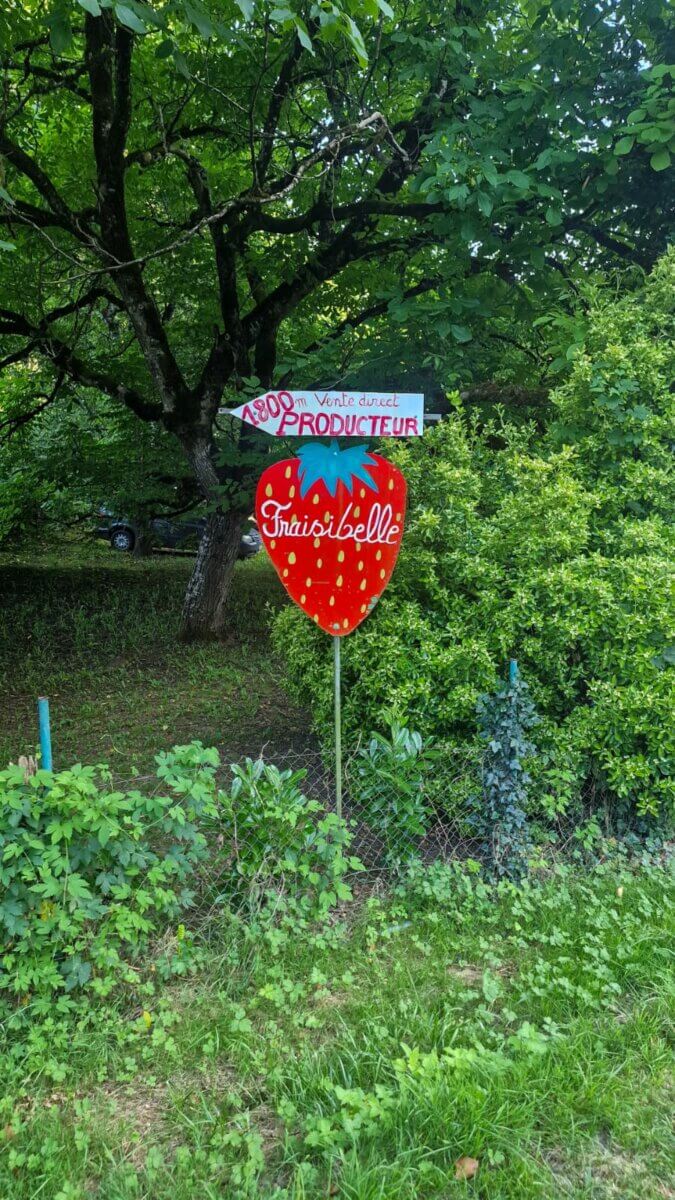
Rocamadour
Technically not in Dordogne at all, but in the Lot department, but often included in Dordogne trips because it’s right next door. It’s such an impressive town you absolutely have to visit when you’re in this area. We linked a place where you can park in the free guide.
Walk along the whole street from start to finish and visit the boutiques. They’re a bit touristy, but it’s still beautiful. The main highlight, though, comes after climbing the Grand Staircase: the Sanctuaire Notre-Dame de Rocamadour, home to the revered Virgin Mary, known as the Black Madonna. You can also take the elevator there and back for 3,30€.
We highly recommend checking out La Porte Sainte for incredible views of the valley. For the Basilica, make sure to go through the “chapelle de prière” first (trust us). And finally, don’t miss the Château de Rocamadour even higher up.
For lunch, we ate galettes at La Maison de Famille. It’s such a cute restaurant with a great vibe, located by a square where the tourist train passes every now and then. Their salted caramel crepe is also totally worth trying.
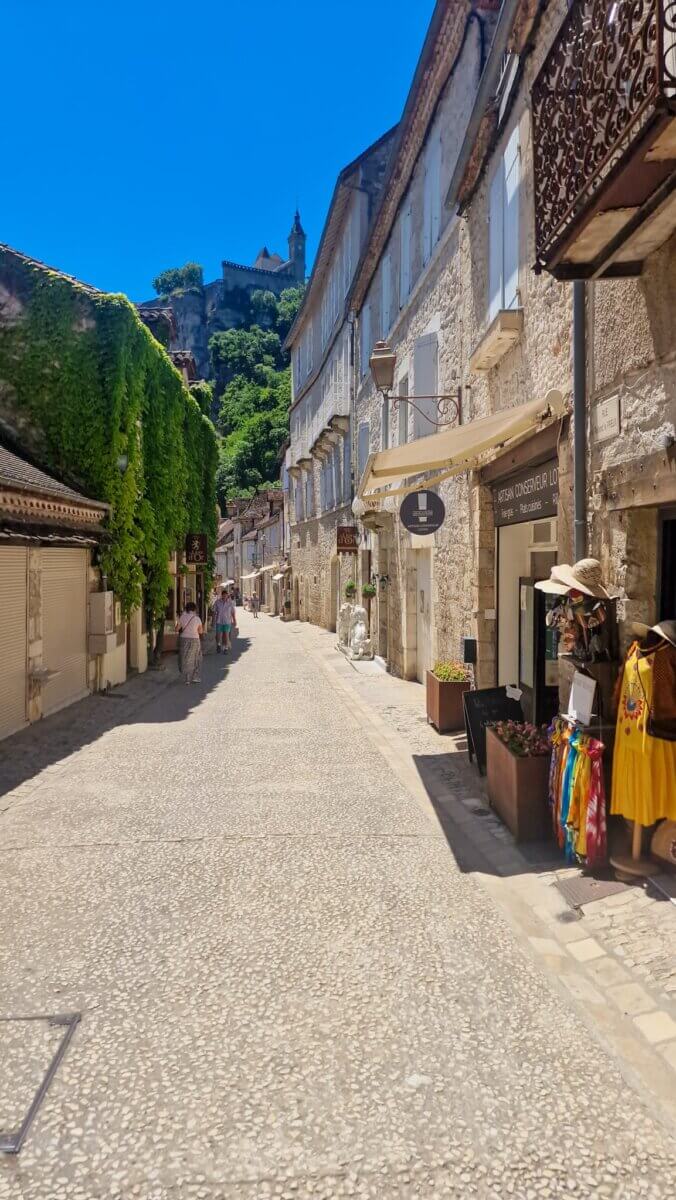
Le Petit Train de Rocamadour
The Petit Train in Rocamadour runs every 15 minutes, taking you from the parking lot (P5) up to the medieval village on the rock, very useful if you’d rather not walk up. A one-way ticket is €3.50 for adults (€2.50 for kids), return is €4.50 (€3.50 for kids). You can book online or just buy your ticket at the station by the parking lot. Bonus: there’s also a night ride, an evening trip with commentary through the lit-up town. (Look up)
Pro tip: If you’re visiting in the warmer months, we suggest coming just before 17:00. That’s when the sun starts to set behind the cliff, so you still get sunlight with the beautiful golden hour. Midday and early afternoon can be unbearably hot.
Where to Stay in Dordogne
More French Getaways, Road Trip Inspo & Budget Hacks You’ll Love
If you’re looking for more ideas on where to go in France, make sure to check out our blog post “8 Top French Holiday Destinations” for some seriously beautiful spots. Or, if you’re more of a road trip type of traveler, check out our post TOP 7 EPIC FRENCH ROAD TRIPS you can do in under 10 days. And if the south of France is on your list, don’t miss our full French Riviera Road Trip, packed with dreamy stops and practical tips. Traveling on a budget? We’ve got you covered. Head over to our Top Budget Travel Hacks to learn how to plan the trip of your dreams without spending a fortune.
Leave a Reply